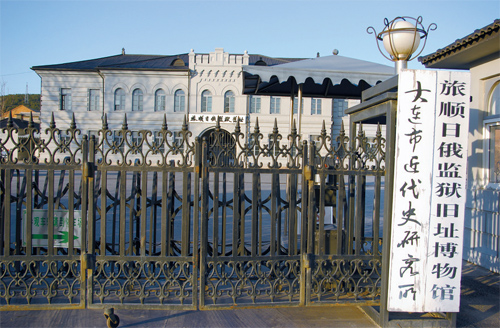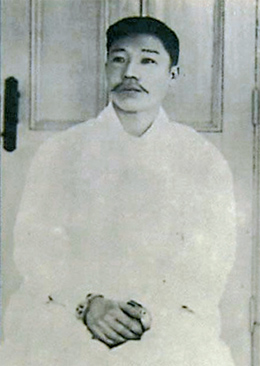Prison where Ahn was killed to open

The Luishun prison building will open to the public in June after being refurbished. In the historic site, Ahn Jung-geun, a Korean independence fighter during the early period of Japanese colonial rule, was executed on March 26, 1910. By Chang Se-jeong
But on the plus side, Luishun prison in the port city of Dalian, northeast China, where Ahn was executed on March 26, 1910 at age 31, will be open to foreigners around June, according to a Chinese official in the area. That means Korean tourists will be allowed to visit the historic spot soon.
The white, Western-style structure that used to be the prison is now a museum. Until now the Chinese government has restricted admission of foreigners in the name of protecting military secrets due to the Chinese navy’s presence nearby.
The prison was built by Russia in 1902. Japan, after winning the Russo-Japanese War in 1905, expanded the prison so that it could hold up to 2,000 prisoners.

Ahn Jung-geun
After assassinating Hirobumi Ito, the resident general of Japan’s colonial government in Korea, on Oct. 26, 1909, Ahn was kept at the prison until his death on March 26, 1910. During his incarceration, he attended six court hearings.
To commemorate Ahn’s deed, the
JoongAng Ilbo made an exclusive visit to the court and the prison to trace his footprints. The entrance fee was 25 yuan (about $3.70) to get into the building, through which the guide led the way to Ahn’s prison cell.
“This is where Ahn Jung-geun of Joseon Dynasty was imprisoned. This is where he wrote ‘Dongyang Pyeonghwaron.’ He was sacrificed for the sake of justice,” said the guide to a group of Chinese tourists. Dongyang Pyeonghwaron is a book he wrote on peace in Asia. The guide pointed to a copper plate hung in the cell. The plate shows Ahn’s pictures, his biography and achievements - in Korean, Chinese, English, Japanese and Russian.
The two-story court building, 1 kilometer (0.6 miles) from the prison, was transformed into a hospital after the war. But a private Korean foundation commemorating patriotic acts against Japan bought the building and turned it into an exhibition hall showcasing items left by Ahn. Also on display are the tools used to torture fighters against Japan.
The room where Ahn was executed had later been used as a laundry room. However, it is now being reconstructed into an exhibition hall for victims of Japanese aggression. It is set for completion in June, according to the Chinese.
Ahn left a will asking that his body be buried in Harbin Park in China and later moved to his homeland should Korea achieve independence. But the patriot’s will was not honored.
After executing Ahn at Luishun prison, Japan kept his burial site secret, destroying all relevant documents. Based on testimony, speculation and long-time rumors that Ahn’s remains were buried in the backyard of the prison, Korea conducted exhumation work there from March until May of last year with help from the Chinese government.
After the joint excavation failed to find any remains, new construction kicked off last October. When the site was visited on Tuesday, an apartment complex was being erected.
“Five-story and twelve-story apartment buildings to accommodate hundreds of households are scheduled for completion by the end of this year, at the earliest,” said a worker at the site.
If the work is done, the body of the martyred Korean patriot may never be located.
According to the Ministry of Patriots and Veterans Affairs, the daughter of a prison warden at the time of the execution once said that Ahn’s body was buried in a spot some 6,600 square meters behind the prison.
By Chang Se-jeong, Seo Ji-eun [spring@joongang.co.kr]
By Chang Se-jeong, Seo Ji-eun










with the Korea JoongAng Daily
To write comments, please log in to one of the accounts.
Standards Board Policy (0/250자)